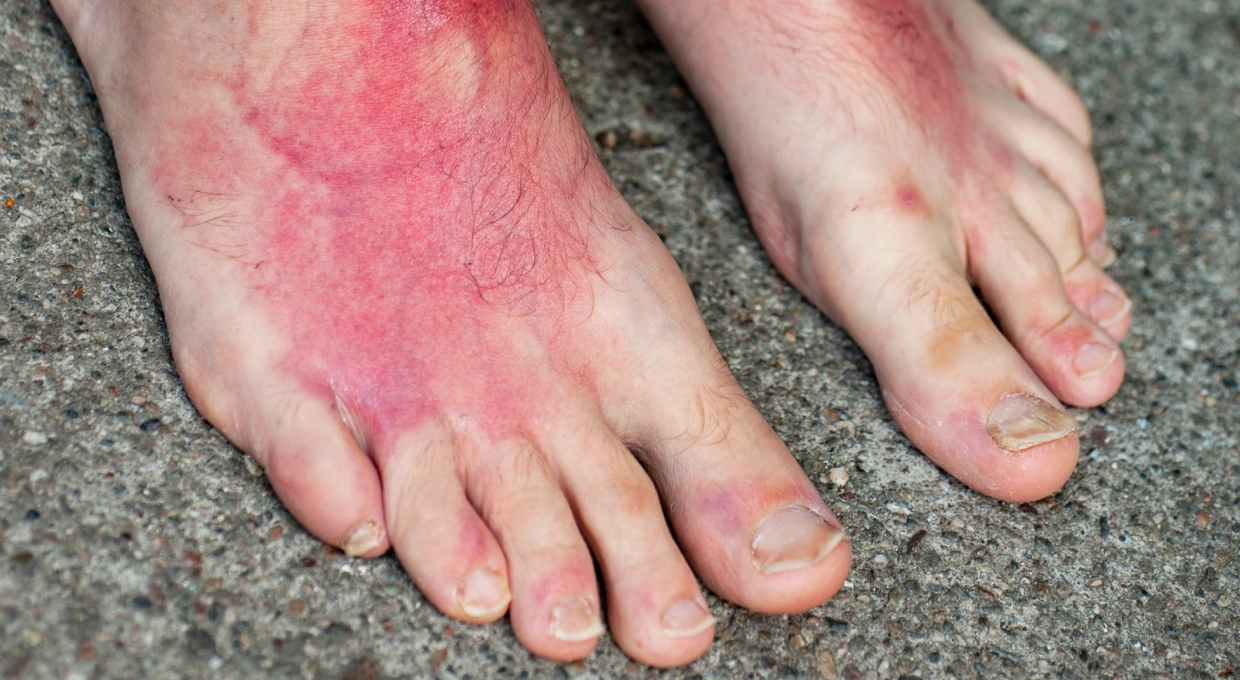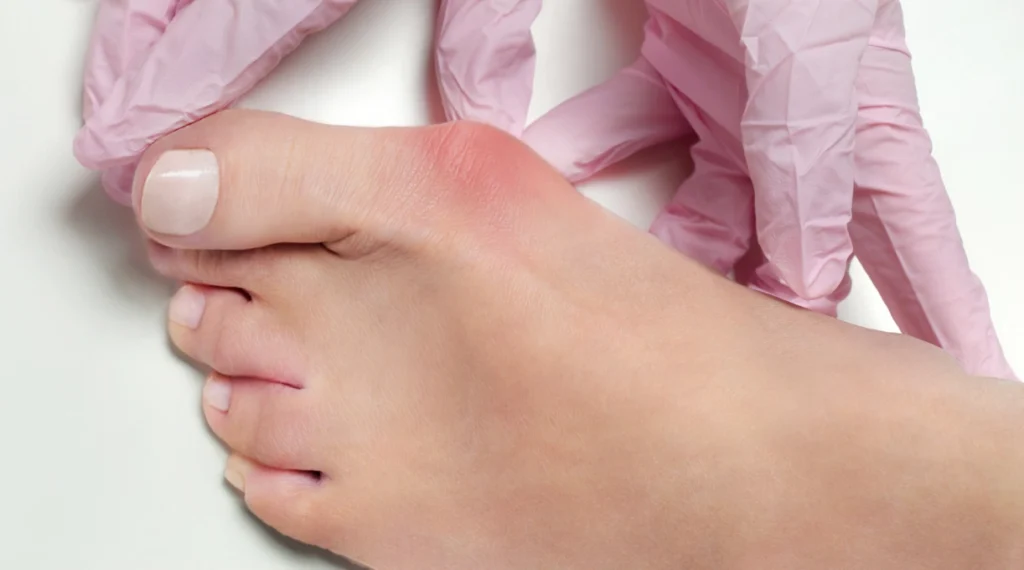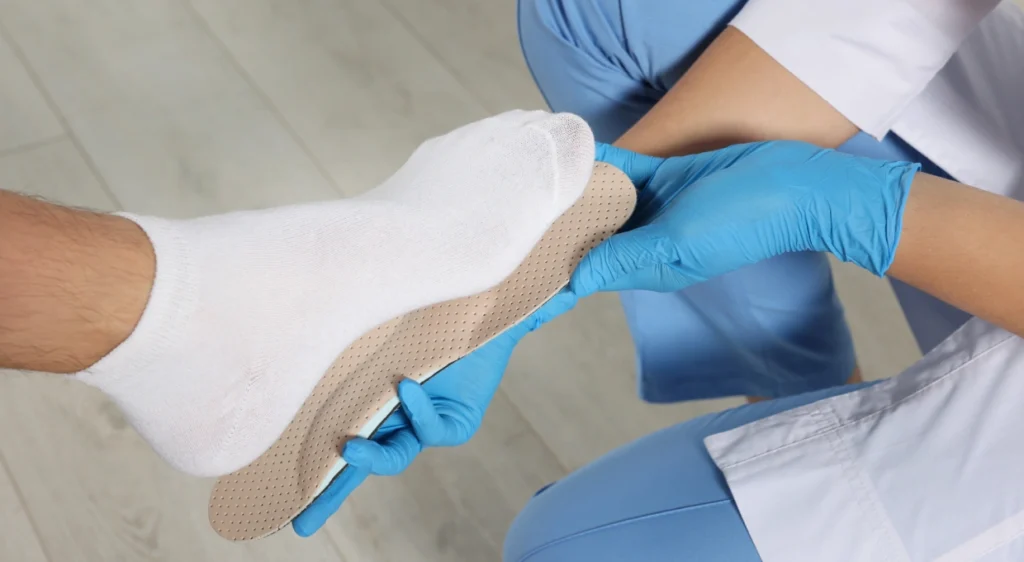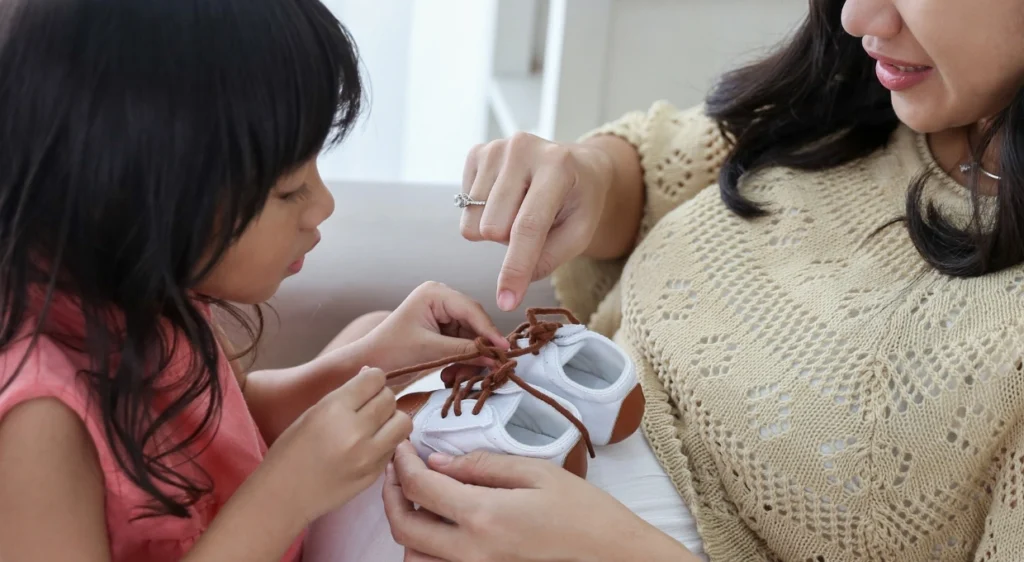Sunburns on the feet are more common than you might think, especially during the summer months when you spend a lot of time outdoors, whether at the beach, the pool or even walking in sandals. Feet are one of the areas most exposed to the sun and often one of the most overlooked when it comes to applying sunscreen. Here’s how to recognize a sunburn on your feet, the steps to take to treat it and the best ways to prevent future burns.
How to recognize a sunburn on the feet?
A sunburn on the feet manifests similarly to a burn on any other part of the body, but because of the sensitivity of the skin in this area, the symptoms can be more uncomfortable. Some of the common signs include:
- Redness: The skin of the feet becomes red and sensitive to the touch.
- Swelling: The feet may swell due to inflammation caused by sun exposure.
- Pain: The feet may feel sore, especially when walking or if touched.
- Blisters: In more severe cases, fluid-filled blisters may appear.
- Hot sensation: Burned skin may feel hot to the touch, even after several hours in the sun.
First aid for treating sunburn on the feet
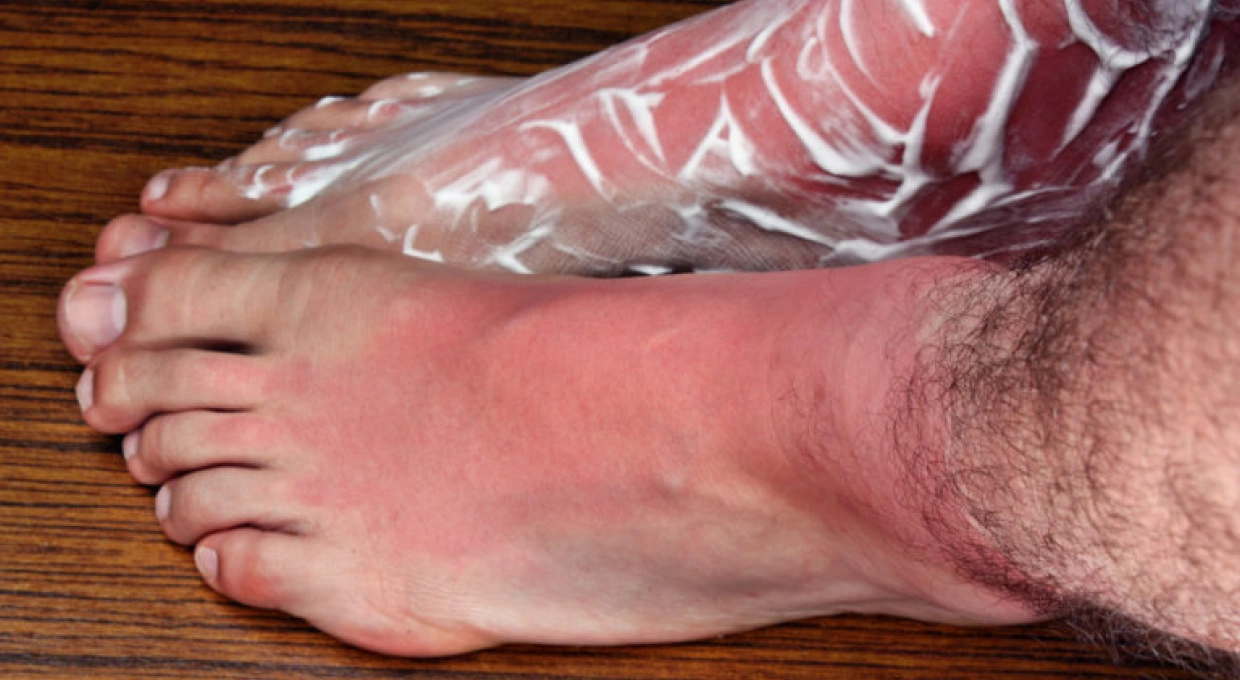
If you’ve suffered a sunburn on your feet, it’s important to act quickly to minimize the damage and relieve the pain. Here is a step-by-step guide on how to treat it:
- Get out of the sun immediately: The first step is to avoid further exposure to the sun. Seek shade or go indoors to prevent the burn from getting worse.
- Cool the affected area: Apply cold compresses to the feet or soak them in cold (not ice) water for 10-15 minutes. This will help reduce swelling and soothe the skin. Avoid using ice directly on the skin, as it may cause more damage.
- Moisturize the skin: After cooling the skin, it is crucial to apply a mild moisturizer or sunburn-specific lotion containing aloe vera or calamine. These ingredients help soothe the skin, reduce redness and promote healing. Avoid products containing alcohol, as they can further dry the skin.
- Keep your feet elevated: If you experience swelling, keeping your feet elevated can help reduce it. Place pillows under your feet while resting.
- Drink plenty of water: Sunburn can dehydrate you, so be sure to drink plenty of water to keep your body hydrated and help your skin recover faster.
- Do not pop blisters: If blisters appear, it is important not to pop them, as they protect the new skin that is forming underneath and reduce the risk of infection. If a blister bursts on its own, gently clean it with soap and water and cover it with a clean dressing.
- Relieve pain: If you feel pain or discomfort, you can take over-the-counter pain relievers such as ibuprofen or acetaminophen, which will also help reduce inflammation.
- Wear comfortable shoes: Avoid wearing tight shoes or socks that may rub against burned skin. Opt for soft, open shoes, such as sandals, that allow the skin to breathe and do not cause friction.
When to consult a physician
In most cases, sunburn on the feet can be treated at home with the above care. However, you should consult a physician if:
- The burn covers a large part of the feet or is very painful.
- You develop fever, chills or dizziness, which could be a sign of heat stroke.
- The blisters are large or multiple, and appear infected (with pus or intense redness around them).
Prevention of sunburn on the feet
Prevention is key to avoid sunburn on your feet. Here are some tips to protect this sensitive part of your body:
- Apply sunscreen: Always apply a broad-spectrum sunscreen with an SPF of at least 30 to your feet, including the toes and tops. Reapply every two hours or after swimming or sweating.
- Wear protective footwear: At the beach or pool, consider wearing sandals or water shoes that cover and protect your feet from the sun.
- Seek shade: Limit sun exposure, especially between 10 a.m. and 4 p.m., when UV rays are strongest.
- Moisturize skin regularly: Keep the skin on your feet well moisturized to make it more resistant to sun damage.
Conclusion
Sunburn on the feet can be painful and uncomfortable, but with proper care, it is possible to alleviate symptoms and prevent complications. Always remember to protect your feet from the sun, as they are one of the most exposed and vulnerable parts of your body. While it’s easy to forget to apply sunscreen to your feet, this small gesture can make a big difference in the health of your skin.
